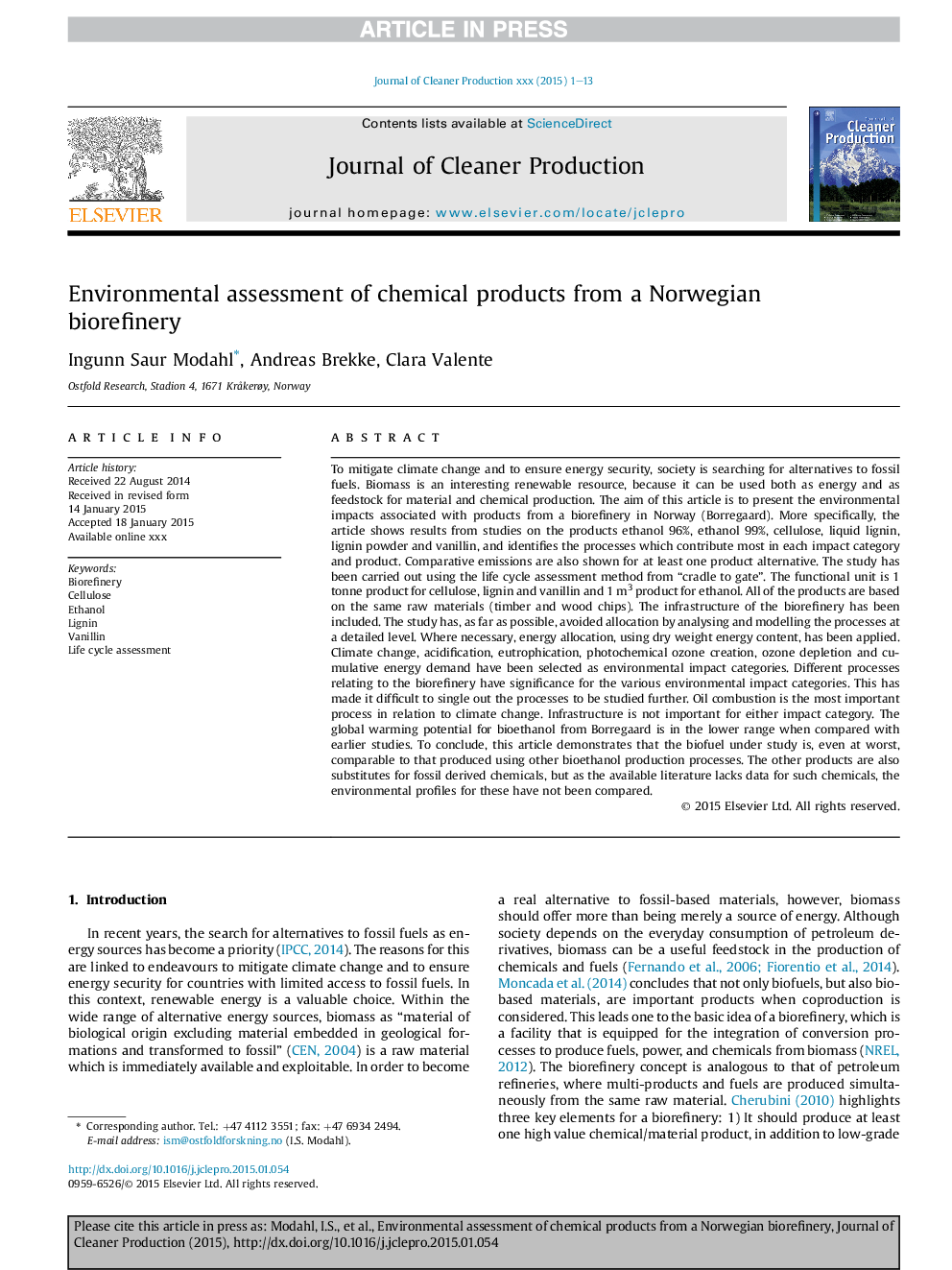| کد مقاله | کد نشریه | سال انتشار | مقاله انگلیسی | نسخه تمام متن |
|---|---|---|---|---|
| 8104649 | 1522152 | 2015 | 13 صفحه PDF | دانلود رایگان |
عنوان انگلیسی مقاله ISI
Environmental assessment of chemical products from a Norwegian biorefinery
ترجمه فارسی عنوان
ارزیابی محیط زیست از محصولات شیمیایی از یک شرکت زیستی نروژی
دانلود مقاله + سفارش ترجمه
دانلود مقاله ISI انگلیسی
رایگان برای ایرانیان
کلمات کلیدی
موضوعات مرتبط
مهندسی و علوم پایه
مهندسی انرژی
انرژی های تجدید پذیر، توسعه پایدار و محیط زیست
چکیده انگلیسی
To mitigate climate change and to ensure energy security, society is searching for alternatives to fossil fuels. Biomass is an interesting renewable resource, because it can be used both as energy and as feedstock for material and chemical production. The aim of this article is to present the environmental impacts associated with products from a biorefinery in Norway (Borregaard). More specifically, the article shows results from studies on the products ethanol 96%, ethanol 99%, cellulose, liquid lignin, lignin powder and vanillin, and identifies the processes which contribute most in each impact category and product. Comparative emissions are also shown for at least one product alternative. The study has been carried out using the life cycle assessment method from “cradle to gate”. The functional unit is 1 tonne product for cellulose, lignin and vanillin and 1Â m3 product for ethanol. All of the products are based on the same raw materials (timber and wood chips). The infrastructure of the biorefinery has been included. The study has, as far as possible, avoided allocation by analysing and modelling the processes at a detailed level. Where necessary, energy allocation, using dry weight energy content, has been applied. Climate change, acidification, eutrophication, photochemical ozone creation, ozone depletion and cumulative energy demand have been selected as environmental impact categories. Different processes relating to the biorefinery have significance for the various environmental impact categories. This has made it difficult to single out the processes to be studied further. Oil combustion is the most important process in relation to climate change. Infrastructure is not important for either impact category. The global warming potential for bioethanol from Borregaard is in the lower range when compared with earlier studies. To conclude, this article demonstrates that the biofuel under study is, even at worst, comparable to that produced using other bioethanol production processes. The other products are also substitutes for fossil derived chemicals, but as the available literature lacks data for such chemicals, the environmental profiles for these have not been compared.
ناشر
Database: Elsevier - ScienceDirect (ساینس دایرکت)
Journal: Journal of Cleaner Production - Volume 94, 1 May 2015, Pages 247-259
Journal: Journal of Cleaner Production - Volume 94, 1 May 2015, Pages 247-259
نویسندگان
Ingunn Saur Modahl, Andreas Brekke, Clara Valente,
